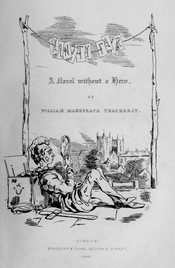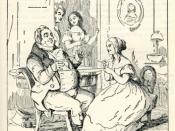How is the Femme Fatale character represented in William Makepeace Thackery's Vanity Fair, and Scott Ziehl's Cruel Intentions 3 and what does this tell us about the representation of all women challenging gender roles?The stereotypical perspectives on men and woman are that men are dominant - strong, brave and powerful - and that women are subordinate - passive, weak and sensitive. Roget's Dictionary actually defines men as the dominant sex. This structure of society, known as Patriarchy, has been lived by for years, dating back to the beginning of time, as we know it. However, there are some texts that challenge this standard way of thinking. These texts usually feature a Femme Fatale - a woman who leads a man to his doom by exploiting his weaknesses. Vanity Fair, written by William Makepeace Thackery, and Cruel Intentions III, directed by Scott Ziehl, are examples of texts that reflect female independence and challenge traditional gender roles.
Vanity Fair is a novel by William Makepeace Thackeray. First published in 1847, the author released the story in monthly instalments. These instalments were then collected together and made into chapters of a book. The novel is a satire of 19th Century England society as a whole, with different characters representing certain classes and groups of people. The main focus, however, is on man's unnatural attachment to money and desire for material possessions. This idea is represented by the central character - Becky Sharp. Growing up in a poor household, Becky values social and financial stability over all else. Her unrestrained ambition drives her and she will do anything to reach the status she desires - behaving morally is not important. She is incredibly vain, wicked and seductive. Becky's representation of a Femme Fatale is emphasised by the extreme contrast between her and...


